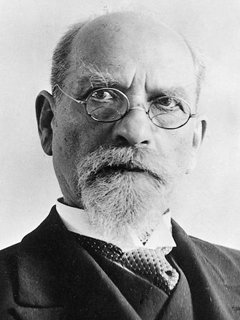
Publication details
Publisher: Springer
Place: Berlin
Year: 2017
Pages: 245-263
Series: Synthese Library
ISBN (Undefined): 9789402411300
Full citation:
, "Husserl and Hilbert", in: Essays on Husserl's logic and philosophy of mathematics, Berlin, Springer, 2017


Husserl and Hilbert
pp. 245-263
in: Stefania Centrone (ed), Essays on Husserl's logic and philosophy of mathematics, Berlin, Springer, 2017Abstract
The paper examines Husserl's (1859–1938) phenomenology and Hilbert's (1862–1943) view of the foundations of mathematics against the backdrop of their lifelong friendship. After a brief account of the complementary nature of their early approaches, the paper focuses on Husserl's Formale und transzendentale Logik (1929) viewed as a response to Hilbert's "new foundations" developed in the 1920s. While both Husserl and Hilbert share a "mathematics first," nonrevisionist approach toward mathematics, they disagree about the way in which the access to it should be construed: Hilbert wanted to reach it and show it consistent by his formalism on the basis of sensuous signs, Husserl held that there should be a reduction to elementary judgements about individuals. Husserl's reduction does not establish the consistency of mathematics but he claims it is important for the considerations of truth.
Cited authors
Publication details
Publisher: Springer
Place: Berlin
Year: 2017
Pages: 245-263
Series: Synthese Library
ISBN (Undefined): 9789402411300
Full citation:
, "Husserl and Hilbert", in: Essays on Husserl's logic and philosophy of mathematics, Berlin, Springer, 2017


